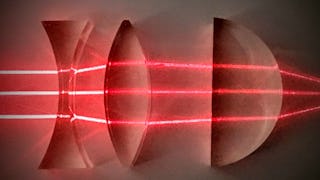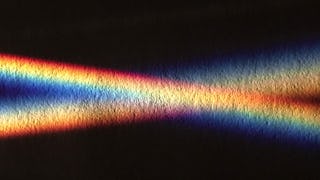This course can also be taken for academic credit as ECEA 5607, part of CU Boulder’s Master of Science in Electrical Engineering degree.
Enjoy unlimited growth with a year of Coursera Plus for $199 (regularly $399). Save now.

Displays
This course is part of Active Optical Devices Specialization

Instructor: Juliet Gopinath
4,670 already enrolled
Included with
(49 reviews)
What you'll learn
Describe the basic principles underlying electroluminescent displays
Describe the basic principles that drive display operation
Explain the technology of electrowetting, e-ink, plasma, and LED displays
Skills you'll gain
Details to know

Add to your LinkedIn profile
6 assignments
See how employees at top companies are mastering in-demand skills

Build your subject-matter expertise
- Learn new concepts from industry experts
- Gain a foundational understanding of a subject or tool
- Develop job-relevant skills with hands-on projects
- Earn a shareable career certificate

There are 3 modules in this course
The course will cover the basics of electronic display devices, including liquid crystals, electroluminescent, plasma, organic light emitting diodes, and electrowetting based displays. At the end of this course learners will be able to select a display technology and perform basic design of the display and have a thorough grasp of basic principles that drive display operation. Module 1 will cover the fundamentals of liquid crystal displays, used in most computer monitors.
What's included
10 videos4 readings2 assignments1 discussion prompt
In this module, we will talk about electroluminescent displays. Electroluminescence is the non-thermal generation of light caused by an applied electric field to a material. Displays using this technology have many advantages including fast response, wide viewing angles, high resolution, wide operating temperatures, light weight, and good display qualities. You will learn about fundamentals of this important class of displays and challenges. It's a very exciting topic!
What's included
2 videos2 readings2 assignments
In this module, you will learn about promising display technologies that include e-ink, electrowetting and plasma displays. While the technology is different than the liquid crystal displays, these techniques have their own advantages in terms of contrast, scaling to large areas and ultralow power consumption. I hope you have as great experience learning about these techniques as I have had in preparing the course material.
What's included
7 videos2 readings2 assignments
Earn a career certificate
Add this credential to your LinkedIn profile, resume, or CV. Share it on social media and in your performance review.
Build toward a degree
This course is part of the following degree program(s) offered by University of Colorado Boulder. If you are admitted and enroll, your completed coursework may count toward your degree learning and your progress can transfer with you.¹
Instructor

Offered by
Explore more from Electrical Engineering
 Status: Free Trial
Status: Free TrialUniversity of Colorado Boulder
 Status: Free Trial
Status: Free TrialUniversity of Colorado Boulder
 Status: Free Trial
Status: Free TrialUniversity of Colorado Boulder
Why people choose Coursera for their career




Learner reviews
49 reviews
- 5 stars
48.97%
- 4 stars
22.44%
- 3 stars
18.36%
- 2 stars
4.08%
- 1 star
6.12%
Showing 3 of 49
Reviewed on Sep 7, 2022
The course is good and the material presented is useful, however, it seems the lecturer does not have the required confidence during presentation.
Reviewed on May 12, 2020
A good course including basic information of Electroluminescent Display, Plasma display panels. OLED display would have been incorporated in the course. A good experience.

Open new doors with Coursera Plus
Unlimited access to 10,000+ world-class courses, hands-on projects, and job-ready certificate programs - all included in your subscription
Advance your career with an online degree
Earn a degree from world-class universities - 100% online
Join over 3,400 global companies that choose Coursera for Business
Upskill your employees to excel in the digital economy
Frequently asked questions
To access the course materials, assignments and to earn a Certificate, you will need to purchase the Certificate experience when you enroll in a course. You can try a Free Trial instead, or apply for Financial Aid. The course may offer 'Full Course, No Certificate' instead. This option lets you see all course materials, submit required assessments, and get a final grade. This also means that you will not be able to purchase a Certificate experience.
When you enroll in the course, you get access to all of the courses in the Specialization, and you earn a certificate when you complete the work. Your electronic Certificate will be added to your Accomplishments page - from there, you can print your Certificate or add it to your LinkedIn profile.
Yes. In select learning programs, you can apply for financial aid or a scholarship if you can’t afford the enrollment fee. If fin aid or scholarship is available for your learning program selection, you’ll find a link to apply on the description page.
More questions
Financial aid available,



